Video Gamer is reader-supported. When you buy through links on our site, we may earn an affiliate commission. Prices subject to change. Learn more
Hunting for Baldur’s Gate 3 classes and subclasses? Picking a class is one of the major decisions that influence your character’s experience across the Forgotten Realms. It determines how you will approach everything from combat to conversations.
While Baldur’s Gate 3 races are important, classes let you tinker between various options with meaningful differences. The game lets you pick from a wide assortment of classes, each with unique class actions and perks. Baldur’s Gate 3 feats let you spice up these choices with meaningful buffs. These can be changed later so don’t hesitate to experiment.
Now that the game is on Xbox too, let’s see what makes classes tick.
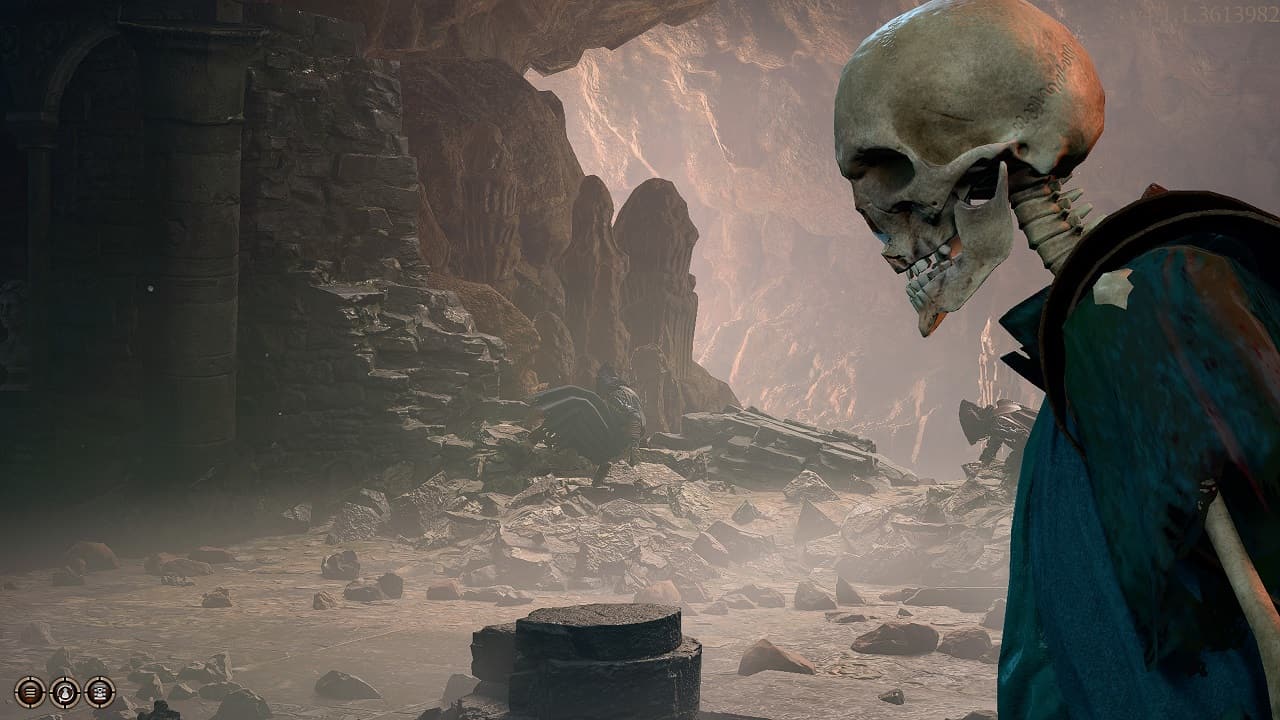
List of Baldur’s Gate 3 classes
There are 12 major classes and 46 subclasses in Baldur’s Gate 3. These can be reworked even further by spending points on the game’s abilities (Strength, Dexterity, Constitution, Intelligence, Wisdom, and Charisma). You can also pick a character’s background, granting them additional perks. Picking a race, background, and subclass that work well with each other can take a while. Each class has a primary statistic that you need to focus on.
Here’s a list of all 12 of Baldur’s Gate 3 classes:
- Cleric
- Fighter
- Ranger
- Rogue
- Warlock
- Wizard
- Druid
- Barbarian
- Sorcerer
- Bard
- Paladin
- Monk
Here’s a handy list of abilities with their classes:
- Strength – primary stat for Fighter, Barbarian, Paladin
- Dexterity – primary stat for Ranger, Rogue
- Constitution
- Intelligence – primary stat for Wizard
- Wisdom – primary stat for Cleric, Druid
- Charisma – primary stat for Warlock, Sorcerer, Bard
List of Baldur’s Gate 3 subclasses
Subclasses let you take advantage of additional skills and perks unique to that subclass. With 46 subclasses, Baldur’s Gate 3 offers a dizzying array of possibilities. Here’s a list of all 46 Baldur’s Gate 3 subclasses:
- Cleric – Knowledge, Life, Light, Nature, Tempest, Trickery, War
- Fighter – Battle Master, Eldritch Knight, Champion
- Ranger – Hunter, Beast Master, Gloom Stalker
- Rogue – Arcane Trickster, Assassin, Thief
- Warlock – Archfey, The Fiend, The Great One
- Wizard – Abjuration, Conjuration, Divination, Enchantment, Evocation, Necromancy, Illusion, Transmutation
- Druid – Land, Moon, Spores
- Barbarian – Berserker, Wildheart, Wild Magic
- Bard – Lore, Valor, Swords
- Sorcerer – Wild Magic, Draconic Bloodline, Storm Sorcery
- Paladin – Ancients, Devotion, Vengeance, Oathbreaker
- Monk – Open Hand, Shadow, Four Elements
Baldur’s Gate 3 classes tier list
Here’s a Baldur’s Gate 3 classes tier list for players venturing into the Forgotten Realms. Note that we’ve assigned S tier to classes that can wriggle out of most situations thanks to a healthy pack of skills and abilities. A tier characters are great too, just not as flexible as S tier ones. B tier classes are great for most situations but may not be able to escape unscathed from any situation. But even if you do pick such a class, remember that you have three other party members with diverse skills to help you out.
Here’s the BG3 classes tier list:
| Tier | Classes |
| S Tier | Bard, Cleric, Paladin, Sorcerer |
| A Tier | Fighter, Ranger, Rogue, Warlock, Wizard |
| B Tier | Monk, Barbarian |
The Bard is a personal favorite of mine as their mixture of Dexterity and Charisma is great for most encounters. Dexterity-based weapons let you be effective in combat and the College of Swords subclass grants more offensive options like a pushback attack and a bonus strike. The Cleric class is also solid, with both defensive options and offensive radiant attacks.
The Paladin is another versatile and durable character whose radiant attacks are great on the front lines. As for the Sorcerer, while their health pools aren’t noteworthy, their spells are. Using Sorcery Points to twin-cast any spell they know often feels like a cheat. While they don’t have Eldritch Blast like the Warlock for consistent damage, they’ve got plenty of other tricks.
Easiest classes to play in Baldur’s Gate 3
If you’re starting your D&D journey with Baldur’s Gate 3, some of its combat and interaction mechanics might take a while to get accustomed to. Here are some of the easiest classes to play in Baldur’s Gate 3:
- Fighter -This class doesn’t rely on spell slots and relies on straightforward damage-dealing instead. Their large health will also let you survive most direct combat encounters. You could even use two-handed weapons for a deadlier bite. One subclass even offers spells at level 3 if you’d like to experiment with magic. It’s one of the best solo classes in Baldur’s Gate 3.
- Rogue – The Assassin subclass in particular is great at dealing with threats right at the start of each combat round. And with the ability to Dash or Hide as a bonus action, you can maneuver along the field before hopping out of Stealth with deadly Sneak Attacks. You’re great at lockpicking too.
- Wizard/Warlock – While casting spells and keeping track of spell slots isn’t simple, it’s some of the most fun you can have in a videogame. Just remember to stand behind meatier companions as you battle it out. This is a solid solo class in Baldur’s Gate 3 as long as you have evasion and defensive spells.
Baldur’s Gate 3 classes and subclasses explained
Each Baldur’s Gate 3 class and subclass has unique stat modifiers and skills that you need to be aware of before finalizing your character. Read on for class-wise descriptions and everything you need to know about their corresponding subclasses. Their primary ability helps them stand out from other classes. Some classes are better at wielding weapons like maces, hand crossbows, and javelins. If you want to gain some features from another class, consider multiclassing in Baldur’s Gate 3.
Let’s start off with the Cleric.
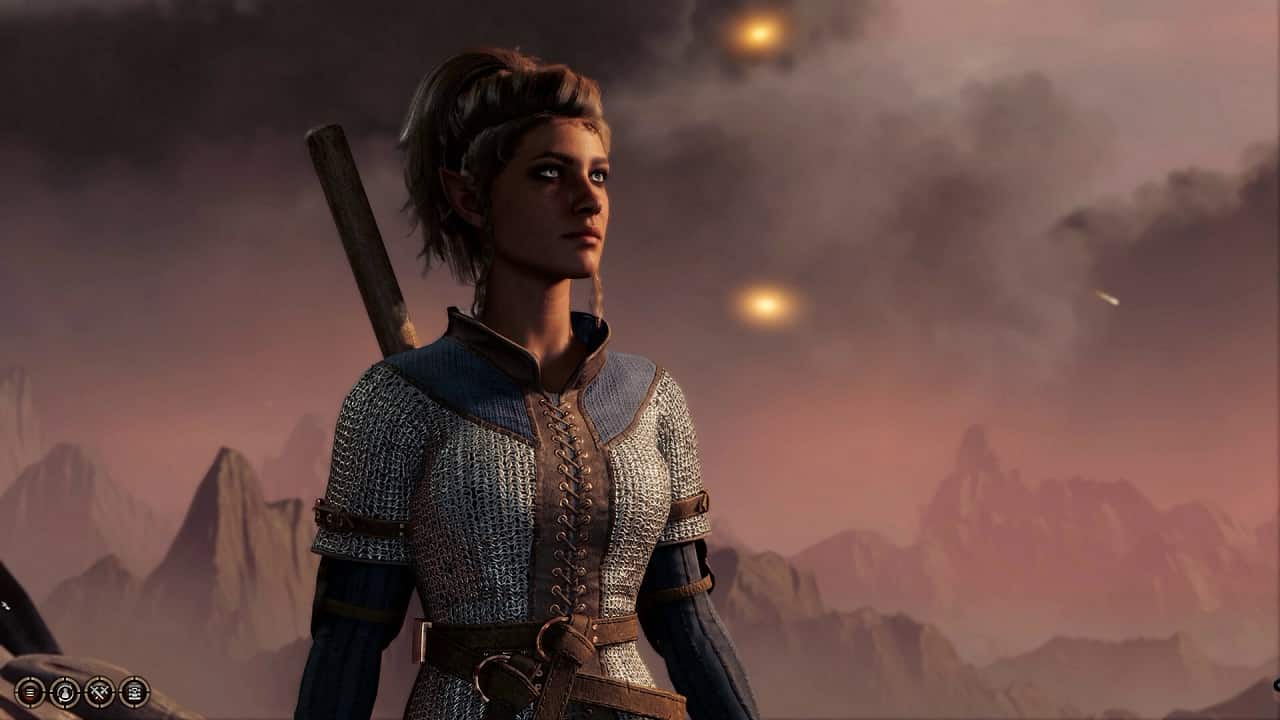
Cleric
Recommended Races: Wood Elf, Human, Gold Dwarf
Best Feats: Medium Armour Master, Shield Master, Ability Improvement (Wisdom)
Clerics act as representatives of the gods they worship, wielding potent divine magic for good or ill. They have access to a range of spells but aren’t known for their melee prowess. You can pick a deity to worship, granting you even more abilities and perhaps a couple of unique quests. You’ll certainly run into other devotees across your adventure in the Forgotten Lands.
Clerics are great at supporting a party with defensive and healing spells. Their Guiding Bolt is particularly deadly against undead and dark forces like the ones you’ll encounter in Act 2. The right subclass can also help Clerics sustain damage in direct combat. They also have access to high-damage spells that can make fights easier. Shadowheart is a Cleric companion you will encounter in the game.
Here’s a table with everything you need to know about the Cleric in Baldur’s Gate 3:
| Class feature | Value or Skill |
| HP gained per level | (8 at level 1) + 4 per level + Constitution modifier |
| Ability check proficiencies | History, Religion, Insight, Medicine, Perception |
| Saving Throw proficiencies | Wisdom and Charisma |
| Armour proficiencies | Light and Medium Armour, Shield |
| Weapon proficiencies | Simple weapon |
| Deities | Selune, Shar, Eilistraee, Vlaakith, Laduguer, Lolth, Yondalla, Garl Glittergold, Corellon Larethian, Moradin, Bhaal, Kelemvor, Oghma, Mystra, Ilmater, Myrkul, Helm, Bane, Tyr, or Tempus. You can add your Wisdom Modifier to the damage you deal with cantrips. |
| Three cantrips of your choice | Guidance, Light, Resistance, Sacred Flame, and Thaumaturgy |
| Prepare three of these level one spells (all are learned) | Bane, Bless, Command (Halt), Create or Destroy Water, Cure Wounds, Guiding Bolt, Healing Word, Inflict Wounds, Protection from Evil and Good, and Shield of Faith |
Here’s how the Baldur’s Gate 3 Cleric subclasses work:
- Life Domain – gain heavy armour proficiency, Disciple of Life (target regains additional HP equal to 2 + spell’s level when you cast a healing spell), Bless level 1 spell (always prepared), Cure Wounds level 1 spell (always prepared).
- Light Domain – Warding Flare (protect yourself with Divine Light. You can use your reaction to impose Disadvantage on an attacker), Burning Hands level 1 spell (always prepared), Faerie Fire level 1 spell (always prepared), and Light cantrip.
- Trickery Domain – Charm Person level 1 spell (always prepared), Disguise Self level 1 spell (always prepared), and Blessing of the Trickster (for an action, grant another creature Advantage on Stealth checks. Must be at melee range and requires Concentration checks).
- Knowledge Domain – Blessings of Knowledge (At 1st level, you learn two languages. You also become proficient in two from Arcana, History, Nature, or Religion with 2x proficiency), Channel Divinity: Knowledge of the Ages (Choose one skill or tool. For 10 minutes, you have proficiency), Channel Divinity: Read Thoughts (read a creature’s thoughts and command it), and Potent Spellcasting (add your Wisdom modifier to the damage you deal with any cleric cantrip)
- Nature Domain – Acolyte of Nature, Heavy Armour proficiency, Channel Divinity: Charm Animals and Plants, Dampen Elements, and Divine Strike (extra 1d8 thunder damage on weapon attacks)
- Tempest Domain – gain Martial Weapon and Heavy Armor proficiency, Wrath of the Storm(2d8 lightning or thunder damage when attacked), Channel Divinity: Destructive Wrath (use your Channel Divinity to deal maximum damage), Thunderous Strike (push Large or smaller creature up to 10 feet away with lightning), and Divine Strike
- War Domain – gain Martial Weapon and Heavy Armor proficiency, War Priest (one weapon attack as a bonus action), Channel Divinity: Guided Strike (Channel Divinity to gain a +10 to attack roll), Channel Divinity: War God’s Blessing (grant Guided Strike to ally), and Divine Strike
Best Cleric subclass in Baldur’s Gate 3
We recommend the Life Domain Cleric. Their heals are among the best in the game. Heavy armour proficiency also lets you use the best armour available.
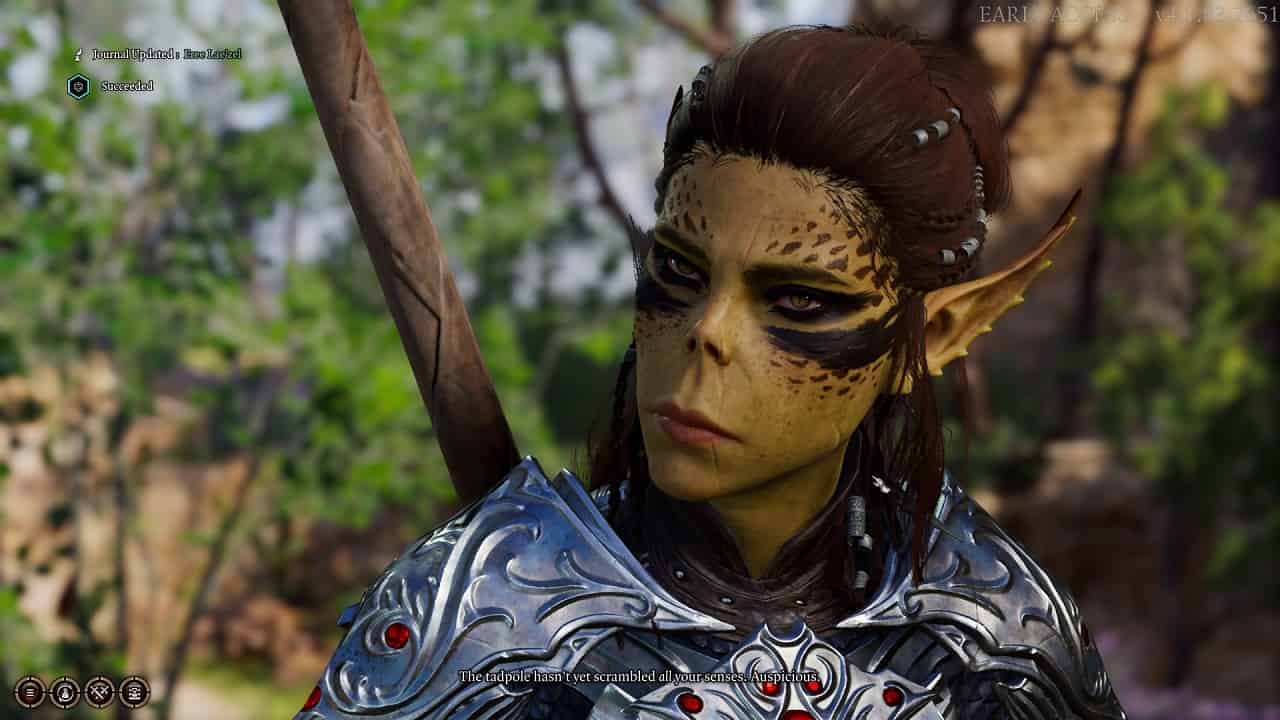
Fighter
Recommended Races: Gold Dwarf, Githyanki, Half-Orc, Human, Wood Elf
Best Feats: Alert, Sentinel, Tough
Fighters have mastered the art of combat, wearing armour like a second skin and wielding weapons with unmatched skill. With proficiency across a variety of weapons and armour, Fighters are front line fighters. A variety of fighting styles let them work towards specific roles like defence or straight-up swordplay. Some of their subclasses even have access to spells. Lae’zel is a fighter companion who is handy during combat.
With a focus on tanking damage and dealing straightforward attacks, the Fighter is a good starting class in the game. They are great at single-target damage and crowd control, especially in boss arenas like Auntie Ethel. This stays true as you work towards reaching level 12. While the Eldritch Knight can cast spells, the Battle Master’s unique maneuvers and Superiority Dice are a better pick.
Here’s a table with everything you need to know about the Fighter in Baldur’s Gate 3:
| Class feature | Value or Skill |
| Maximum HP gained per level | (10 at level 1) + 5 per level + Constitution modifier |
| Ability check proficiencies | Athletics, Religion, Insight, Perception, and Intimidation |
| Saving Throw proficiencies | Strength and Constitution |
| Armour proficiencies | Light, Medium, and Heavy Armour, Shield |
| Weapon proficiencies | Simple weapon and Martial weapon |
| Fighting styles | Archery, Defence, Duelling, Great Weapon Fighting, Protection, or Two-Weapon Fighting |
| Class Feature – Second Wind | Heal 1d10+1 damage by drawing on your stamina |
| Class Feature – Action Surge | Use this ability to perform an additional action like an attack. |
Here’s how the Baldur’s Gate 3 Fighter subclasses work:
- Eldritch Knight – Spell Slots unlocked (gain 2 level 1 spell slots).
- Battle Master – gain 4 Superiority Dice (D8s) to fuel Battle Master manoeuvres.
- Champion – Improved Critical (19 on weapon attacks also crit) and Remarkable Athlete (add half your proficiency bonus to any Strength, Dexterity, or Constitution check you make that doesn’t already use your proficiency bonus).
Best Fighter subclass in Baldur’s Gate 3
We recommend the Battle Master as their Superiority Dice let them perform a wide variety of sweet moves in combat. This includes giving your attack turn to someone else and unique attacks that disable enemies.
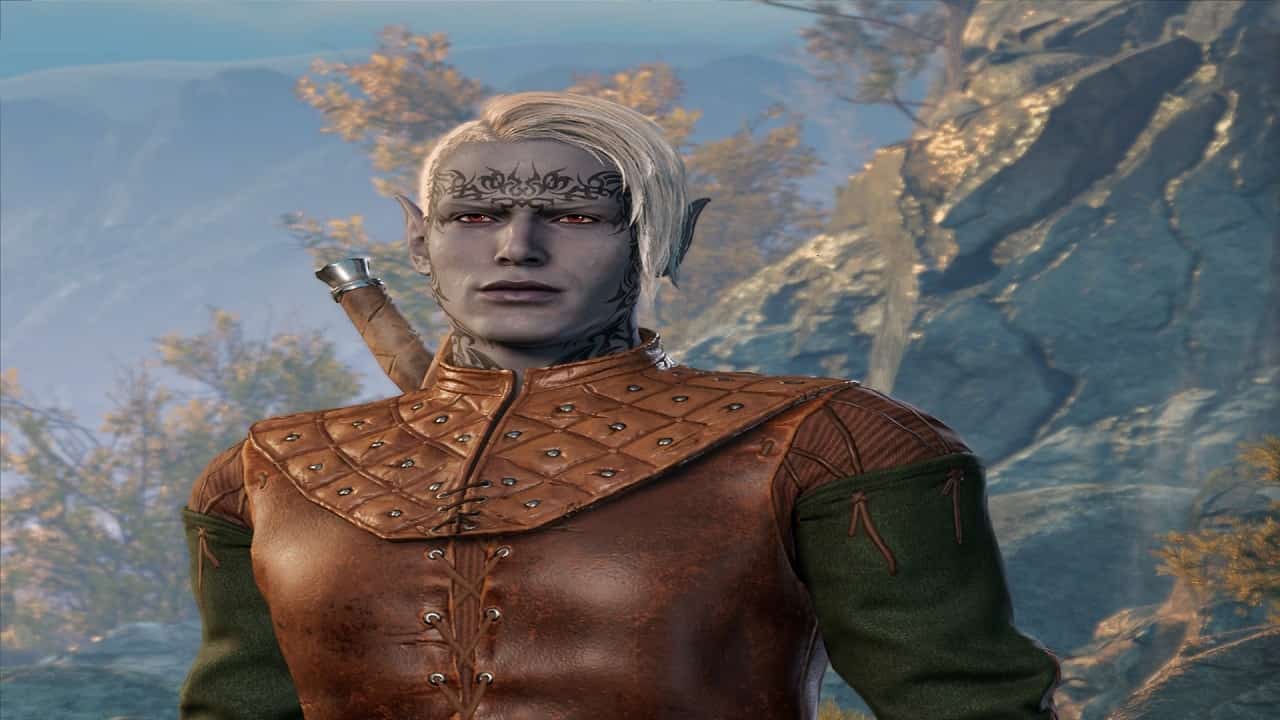
Ranger
Recommended Races: Wood Elf, Human
Best Feats: Dual Wielder, Sharpshooter, Skilled
Rangers are unparalleled scouts and trackers, honing a deep connection to nature in order to hunt their favoured prey. They can pick a favoured enemy to grant them unique perks, cantrips, and spells. Their Natural Explorer class action also lets them pick between a beast companion and protection from certain elements. The Hunter subclass is particularly adept at tackling beasts, especially large ones common in Dungeons & Dragons lore.
The Hunter’s Prey feature lets the Ranger pick targets and snipe them off the map. You can spec a Ranger into a stealthy ranged combatant or a more survival-focused one. Ambushing enemies is always a good idea with a Ranger. A companion animal is a sweet perk. Consider a ranger if you like picking off enemies from afar. Misc is a ranger companion you will meet later on in the game.
Here’s a table with everything you need to know about the Ranger in Baldur’s Gate 3:
| Class feature | Value or Skill |
| Maximum HP gained per level | (10 at level 1) + 5 per level + Constitution modifier |
| Ability check proficiencies | Stealth, Nature, Religion, Insight, Perception, and Survival |
| Saving Throw proficiencies | Strength and Dexterity |
| Armour proficiencies | Light and Medium Armour, Shield |
| Weapon proficiencies | Simple weapon and Martial weapon |
| Class Action – Favoured Enemy | Bounty Hunter – Investigation proficiency Keeper of the Veil – Protection from Evil and Good level 1 spell and Arcana proficiency Mage Breaker – True Strike cantrip and Arcana proficiency Ranger Knight – History ability skill proficiency and heavy armour proficiency Sanctified Stalker – Religion proficiency and Sacred Flame cantrip |
| Class Action – Natural Explorer | Beast Tamer – Find Familiar level 1 spell Urban Tracker – Sleight of Hand proficiency and Disguise Kits/ Thieves’ Tools Wasteland Wanderer: Cold/Fire/Poison resistance |
Here’s how the Baldur’s Gate 3 Ranger subclasses work:
- Beast Master – gain Summon Companion (a beast companion).
- Hunter – gain Hunter’s Prey (Colossus Slayer, Giant Killer, Horde Breaker).
- Gloom Stalker – Gloom Stalker Magic (learn an additional spell when you reach certain levels), Dread Ambusher (bonus initiative, first turn gives you quicker walking speed and bonus attack with 1d8 extra damage), Umbral Sight (gain darkvision or enhance it by 30 feet), Iron Mind (proficiency in Wisdom, Intelligence, or Charisma saving throws), and Stalker’s Flurry (if you miss, you can attack again).
And here’s how the Hunter subclass features work:
- Colossus Slayer – once per turn, your weapon attack deals an extra 1d8 damage if the target is damaged.
- Giant Killer – if a Large or bigger creature attacks you, you can use your reaction to make a melee attack.
- Horde Breaker – target two creatures standing close to each other, attacking them in quick succession.
Best Ranger subclass in Baldur’s Gate 3
The Beast Master gets a pet. Need I say more? The bear is a good defensive companion.
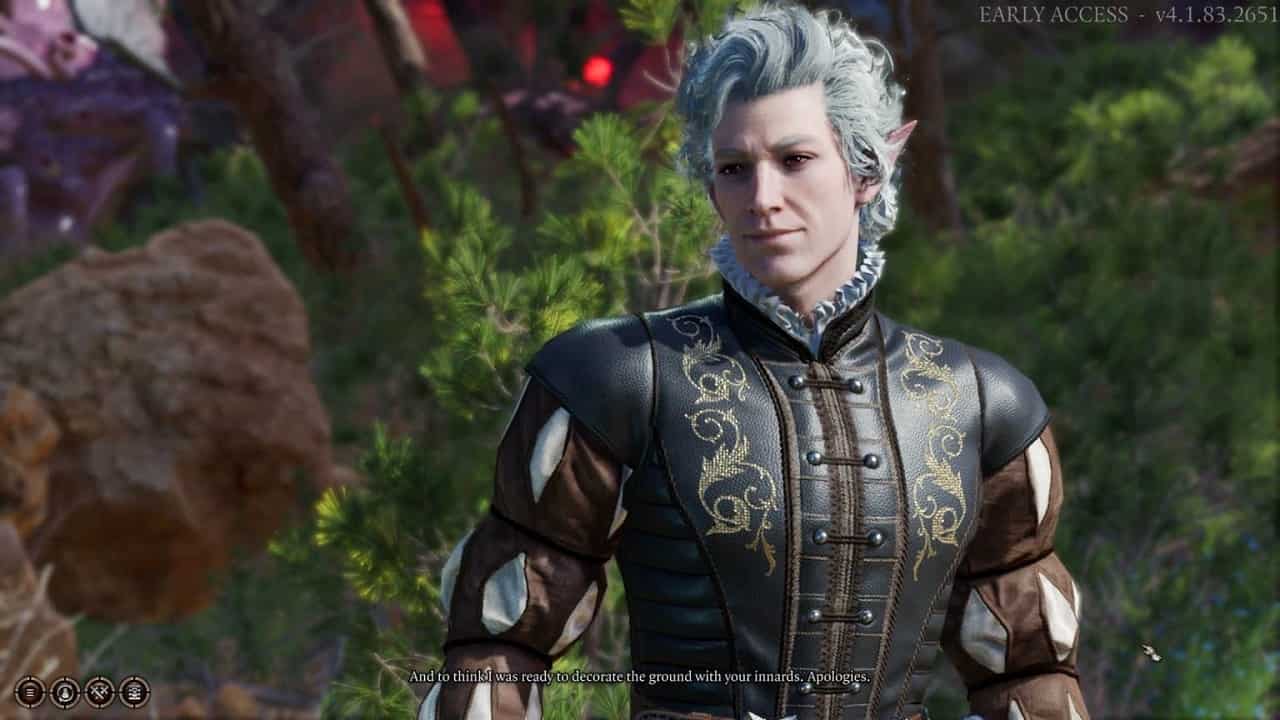
Rogue
Recommended Races: Drow, High Elf, Wood Elf, Deep Gnome, Haflings, Half-Elf, Human
Best Feats: Dungeon Delver, Lucky, Ability Improvement (Dexterity)
Stealthy, skilled, and death-defying, a rogue’s versatility lets them get the upper hand in almost any situation. Their Sneak Attacks are deadly as they wreck through unsuspecting foes with bows, daggers, or rapiers. A Rogue can also use Dash to double their movement to switch positions or retreat with ease. The Arcane Tricker’s Mage Hand Legerdemain feature is a particular favourite of mine, letting you summon an invisible hand with even more versatility than a regular Mage Hand.
Rogues are deadly in combat, especially if they catch enemies by surprise. The Assassin subclass lets you deal more damage during the first round of combat and even lets you deal critical hits to surprised enemies. They’re great at lockpicking and dealing with deadly traps too. Remember that you can enter stealth with Cunning Action without spending an Action, letting you attack right after. Astarion is a Rogue you will meet fairly early in the BG3 campaign.
Here’s a table with everything you need to know about the Rogue in Baldur’s Gate 3:
| Class feature | Value or Skill |
| Maximum HP gained per level | (8 at level 1) + 4 per level + Constitution modifier |
| Ability check proficiencies | Acrobatics, Sleight of Hand, Stealth, Religion, Insight, Perception, and Deception |
| Saving Throw proficiencies | Dexterity and Intelligence |
| Armour proficiencies | Light Armour |
| Weapon proficiencies | Simple weapon, Hand Crossbow, Longsword, Rapier, and Shortsword |
| Class Action – Sneak Attack (Melee or Ranged) | As an Action, deal weapon damage +1D6 Slashing damage against a foe you have an Advantage against. You can also use this attack if you have an ally within 1.5 metres of the target and you don’t have a Disadvantage. |
| Cunning Action – Dash | Double your Movement Speed for the current turn. |
Here’s how the Baldur’s Gate 3 Rogue subclasses work:
- Thief – gain Fast Hands (additional bonus action) and Second-Story Work (resistance to falling damage).
- Arcane Trickster – Spell Slots unlocked and Mage Hand Legerdemain (invisible Mage Hand that can carry out additional tasks).
- Assassin – gain Assassinate (from 3rd level, advantage on attack rolls against a creature that hasn’t taken a turn and critical hit on surprised creatures).
Best Rogue subclass in Baldur’s Gate 3
Considering that your attacks as a Rogue will usually be right out of Stealth, consider an Assassin. With crits on surprised creatures and advantage on attack rolls during the first turn, this class earns its name with ease.
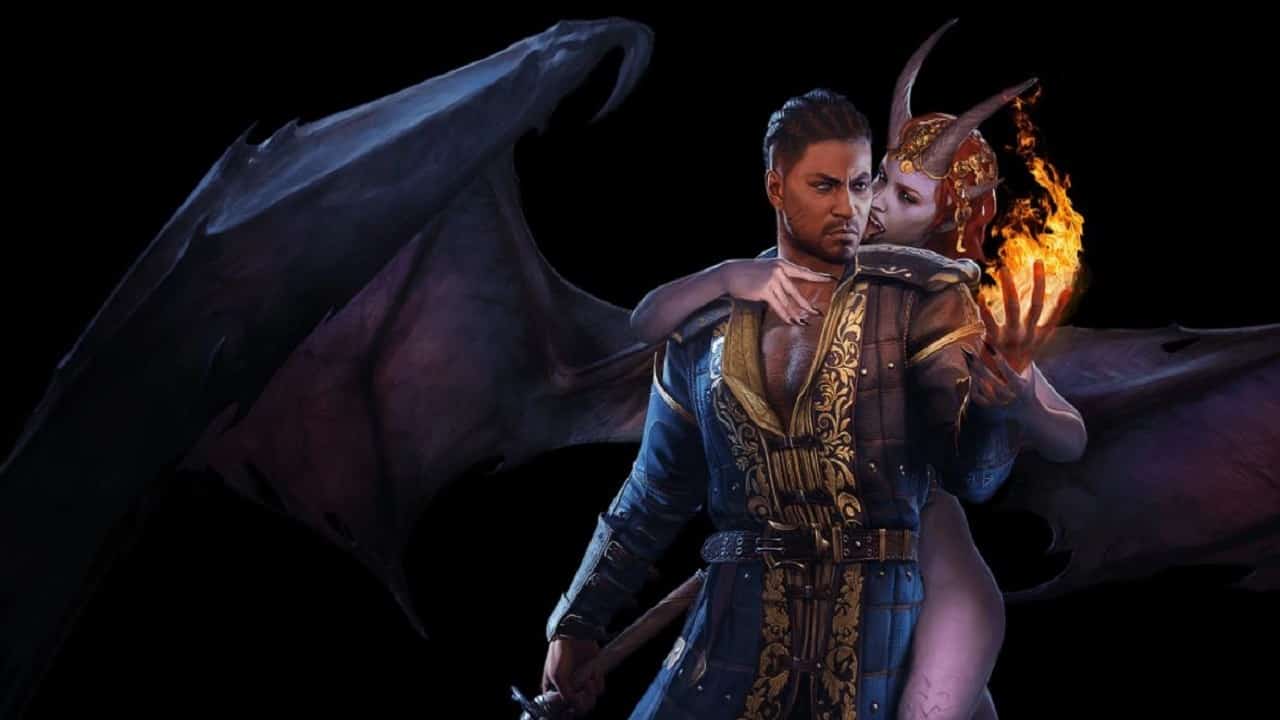
Warlock
Recommended Races: Half-Elf, Human, Asmodeus Tiefling
Best Feats: Ritual Caster, Magic Initiate: Sorcerer, War Caster
Bound by their pact to an all-powerful patron, warlocks trade loyalty for supernatural abilities and unique magic. With a wide buffet of cantrips and level one spells to pick from, a Warlock has all sorts of use cases. A Minor Illusion can drastically alter the shape of combat by creating confusion. Their subclasses also have unique spells, with the Archfey’s Misty Escape letting your fragile Warlock weave in and out of combat.
Warlocks are deadly in combat and aren’t as frail as their Wizard and Sorcerer counterparts. The Hex and Eldritch Blast cantrips are your best friends. The former lets you disadvantage an enemy in an ability that you choose. And Eldritch Blast is a reliable damage dealer as not many monsters and foes are resistant to Force damage. Wyll is a solid damage dealer companion who you will meet in the first Act of Baldur’s Gate 3.
Here’s a table with everything you need to know about the Warlock in Baldur’s Gate 3:
| Class feature | Value or Skill |
| Maximum HP gained per level | (8 at level 1) + 4 per level + Constitution modifier |
| Ability check proficiencies | Arcana, Religion, Insight, Perception, and Intimidation |
| Saving Throw proficiencies | Wisdom and Charisma |
| Armour proficiencies | Light Armour |
| Weapon proficiencies | Simple weapon |
| Two cantrips of your choice | Blade Ward, Chill Touch, Eldrich Blast, Friends, Mage Hand, Minor Illusion, Poison Spray, and True Strike |
Here are the differences between the Baldur’s Gate 3 Warlock subclasses:
- The Field – Dark One’s Healing (reduce a hostile creature to zero HP and get 2+1 temporary HP) and two level one spells of your choice – Armour of Agathys, Arms of Hadar, Burning Hands, Charm Person, Command (Halt), Expeditious Retreat, Hellish Rebuke, Hex, Protection from Evil and Good, and Witch Bolt.
- The Great Old One – two level one spells of your choice – Armour of Agathys, Arms of Hadar, Charm Person, Dissonant Whispers, Expeditious Retreat, Hellish Rebuke, Hex, Tasha’s Hideous Laughter, Protection from Evil and Good, and Witch Bolt.
- Archfey – gain Fey Presence, Misty Escape, and Beguiling Defenses
And here are the features of Baldur’s Gate 3 Archfey Warlock:
- Fey Presence – each creature in a 10-foot cube originating from you is charmed or frightened if they fail a Wisdom saving throw against your warlock spell save check.
- Misty Escape (6th level) – vanish in a puff of mist in response to harm, teleporting up to 60 feet and remaining invisible for a turn until you use an action.
- Beguiling Defenses (10th level) – immune to being charmed and when another creature attempts to charm you, you can use your reaction to attempt to turn the charm back on that creature.
Best Warlock subclass in Baldur’s Gate 3
We recommend the Fiend Warlock. Their Dark One’s Blessing grants temporary health when killing enemies, making them sturdy allies in combat.

Wizard
Recommended Races: Drow, Duergar Dwarf, High Elf, Githyanki, Rock Gnome, Forest Gnome, Half-Elf, Human, Mephistopheles Tiefling
Best Feats: Elemental Adept, Spell Sniper, Ability Improvement (Intelligence)
Wizards master the arcane by specializing in individual schools of magic, honing ancient spells to modern heights. While they can’t take a punch head-on, their magic skills let them unleash carnage from afar. With seven schools to pick from, the Wizard’s subclasses lend it a good deal of variety. Their level one spells are particularly potent too.
Low health aside, the Wizard can use spells to take control of the battlefield. And if health is an issue, Misty Step and Dimension Door let you avoid enemies that get too close. Powerful AoE spells can make short work of enemy minions and even boss encounters. Gale is a solid companion in BG3 thanks to his versatile spells.
Here’s a table with everything you need to know about the Wizard in Baldur’s Gate 3:
| Class feature | Value or Skill |
| Maximum HP gained per level | (6 at level 1) + 3 per level + Constitution modifier |
| Ability check proficiencies | Arcana, History, Religion, Insight, and Perception |
| Saving Throw proficiencies | Intelligence and Wisdom |
| Armour proficiencies | None |
| Weapon proficiencies | Dagger, Quarterstaff, and Light Crossbow |
| Three cantrips of your choice | Acid Splash, Blade Ward, Chill Touch, Dancing Lights, Fire Bolt, Friends, Light, Mage Hand, Poison Spray, Ray of Frost, Shocking Grasp, and True Strike |
| Six level 1 spells of your choice and prepare four level 1 spells from these | Burning Hands, Charm Person, Chromatic Orb, Colour Spray, Disguise Self, Expeditious Retreat, False Life, Feather Fall, Find Familiar, Fog Cloud, Grease, Tasha’s Hideous Laughter, Jump, Longstrider, Mage Armour, Magic Missile, Protection from Evil and Good, Ray of Sickness, Sleep, Thunderwave, and Witch Bolt |
Here are the differences between the Baldur’s Gate 3 Wizard subclasses:
- Abjuration School – Abjurant Savant (Halves the cost to learn Abjuration spells from spell scrolls) and Arcane Ward (create a magical ward with a maximum of 3 hit points and absorbs all damage done to you).
- Conjuration School – Minor Conjuration (conjure up an inanimate object), Benign Transportation (teleport up to 30 feet or swap places with an ally), and Focused Conjuration (conjuration concentration can’t be broken as a result of taking damage).
- Divination School – Portent (replace any attack roll, saving throw, or ability check made by you or a creature with two pre-rolled dice), Expert Divination (When you cast a divination spell of 2nd level or higher using a spell slot, you regain one expended spell slot), and The Third Eye (Darkvision or See Invisibility).
- Enchantment School – Hypnotic Gaze (charm creature), Instinctive Charm (use your reaction to divert creature attack), and Split Enchantment (target a second creature with enchantment spells).
- Evocation School – Evocation Savant (Halves the cost to learn Evocation spells from spell scrolls) and Sculpt Spells (Create pockets of safety where Allies succeed their saving throws and take no damage from Evocation Spells)
- Necromancy School – Grim Harvest (reap life energy from creatures you kill with your spells), Undead Thralls (Animate Dead targets one additional corpse and grants it bonus health and damage rolls), and Inured to Undeath (resistance to necrotic damage, and your hit point maximum can’t be reduced).
- Illusion School – Improved Minor Illusion, Malleable Illusions (can change the nature of that illusion), and Illusory Self (illusory duplicate of yourself as an instant).
- Transmutation School – Minor Alchemy (temporarily alter the physical properties of one nonmagical object), Transmuter’s Stone (create it to store transmutation magic), and Shapechanger (Polymorph without expending a spell slot).
Best Wizard subclass in Baldur’s Gate 3
Evocation and Necromancy Wizards have a wide range of spells to pick from. Grim Harvest lets a Necromancy Wizard draw on the health of their enemies to heal themselves.
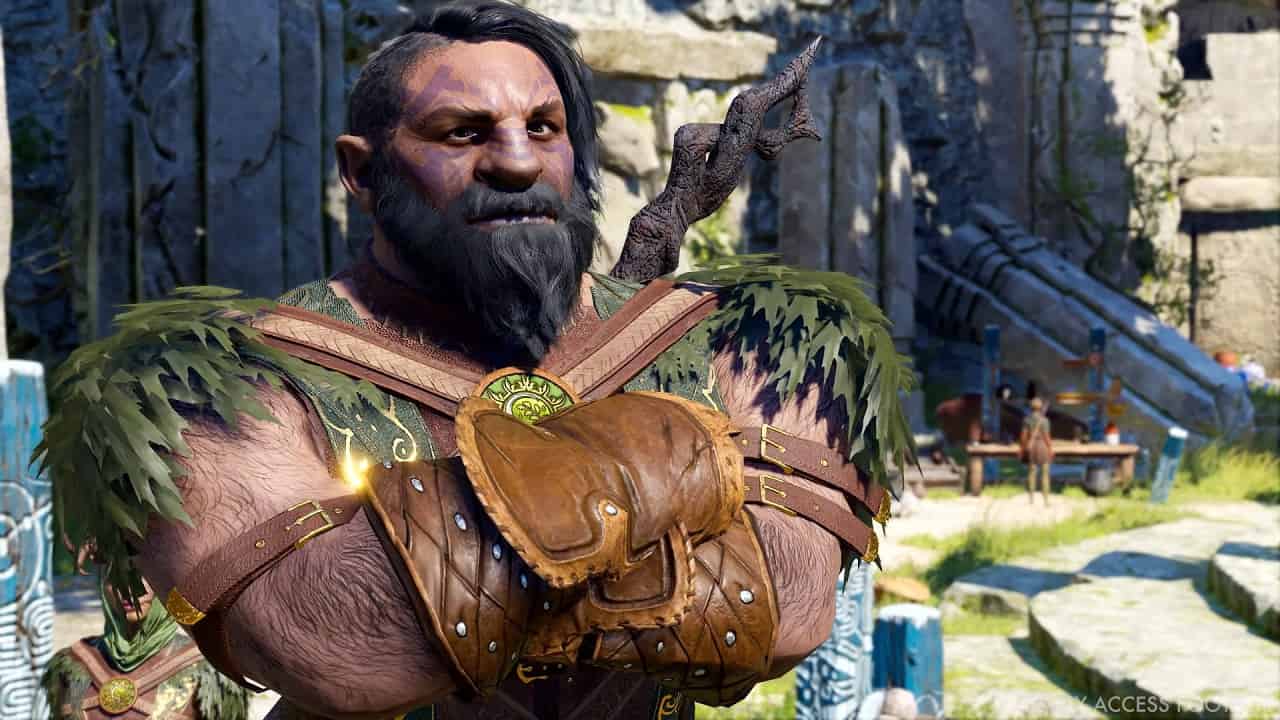
Druid
Recommended Races: Shield Dwarf, Wood Elf, Human
Best Feats: Elemental Adept. Mage Slayer, Ability Improvement (Wisdom)
Druids are masters of nature magic who can transform into several kinds of animals with their Wild Shape ability. Their spellcasting is just as adaptive as the Wizard’s kit. Pick the Circle of the Land subclass and you can even replenish spell slots with the help of the Natural Recovery feature.
Close to Nature, Druids are a good option for players who want to turn into an animal and deal damage via powerful spells. They also have better survivability than the Wizard and Sorcerer. Turning into a rat lets you enter small spaces, sidestepping regular challenges and unlocking bonus content and paths to success. Halsin and Jaheira are your Druid companion picks in the game.
Here’s a table with everything you need to know about the Druid in Baldur’s Gate 3:
| Class feature | Value or Skill |
| Maximum HP gained per level | (8 at level 1) + 4 per level + Constitution modifier |
| Ability check proficiencies | Nature, Religion, Animal Handling, Insight, and Perception |
| Saving Throw proficiencies | Intelligence and Wisdom |
| Armour proficiencies | Light and Medium Armour, Shield |
| Weapon proficiencies | Club, Dagger, Javelin, Mace, Quarterstaff, Scimitar, Sickle, and Spear |
| Two cantrips of your choice | Guidance, Poison Spray, Produce Flame, Resistance, Shillelagh, and Thorn Whip |
| Prepare three of these level one spells (all are learned) | Animal Friendship, Charm Person, Create or Destroy Water, Cure Wounds, Entangle, Faerie Fire, Fog Cloud, Goodberry, Healing Word, Jump, Longstrider, Speak with Animals, and Thunderwave |
Here are the differences between the Baldur’s Gate 3 Druid subclasses:
- Circle of the Moon – gain Combat Wild Shape (assume the form of a beast).
- Circle of the Land – gain Wild Shape and Natural Recovery (replenish expended spell slots).
- Circle of Spores – gain Halo of Spores (use your reaction to deal 1d4 necrotic damage), Symbiotic Entity (expend a use of your Wild Shape to gain temporary hit points and a more potent Halo of Spores), Fungal Infestation (your spores gain the ability to infest a corpse and animate it), and Spreading Spores (Halo of Spores in a 10-foot cube).
Best Druid subclass in Baldur’s Gate 3
Circle of the Moon lets you turn into a beast to deal devastating damage. Cue the Owlbear attack from the skies. But if you want a mushroom army, consider the Circle of the Spore.
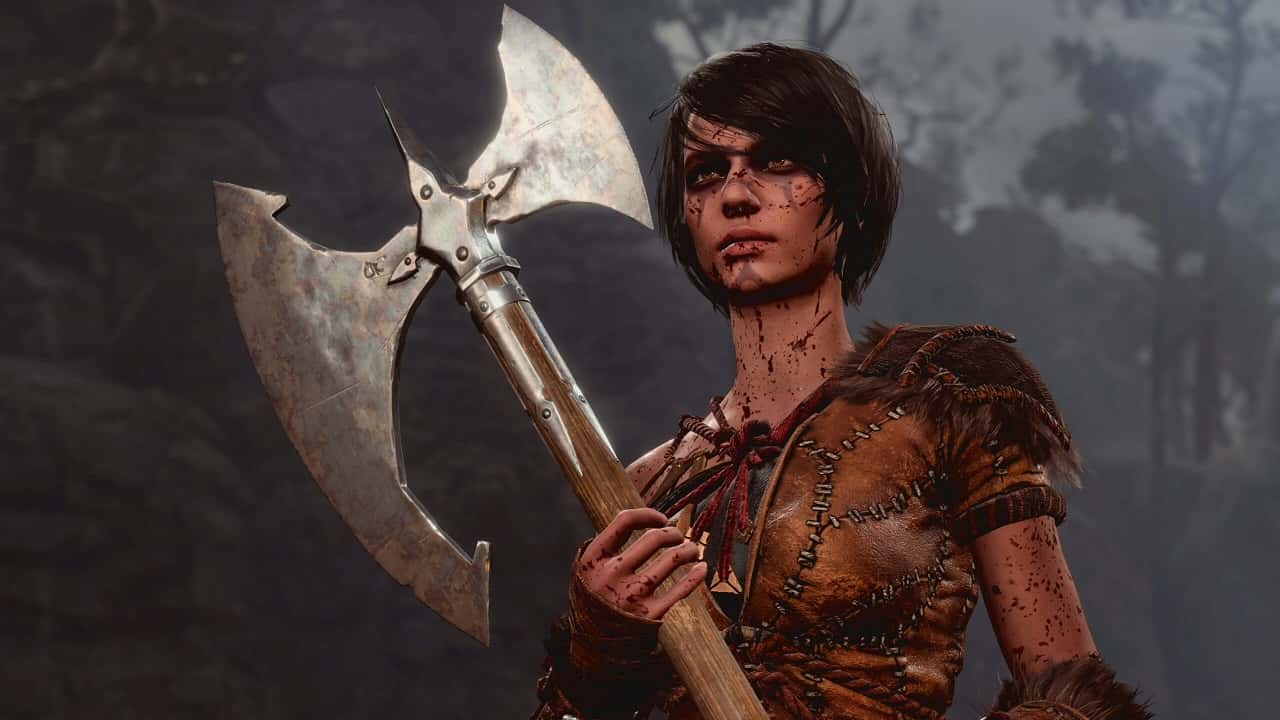
Barbarian
Recommended Races: Gold Dwarf, Githyanki, Half-Orc, Human
Best Feats: Savage Attacker, Great Weapon Master, Durable
Barbarians are fierce warriors who can enter a battle rage. This rage sits at the center of their kit, letting them deal bonus damage to other enemies. The Berserker subclass in particular leans heavily into raging and wrecking havoc among your foes. The unarmored defence feature even lets you consider not equipping armour to be more mobile in combat.
Using Rage lets Barbarians be an unstoppable force in the battleground. The Berserker’s Frenzied Strike is great but I prefer the Wildheart Barbarian’s versatility thanks to their Bestial Hearts system. Remember that you can respec in BG3 if you want to change your skillset. Karlach packs a punch as a companion thanks to her being a Tiefling Barbarian.
Here’s a table with everything you need to know about the Barbarian in Baldur’s Gate 3:
| Class feature | Value or Skill |
| Maximum HP gained per level | (12 at level 1) + 6 per level + Constitution modifier |
| Ability check proficiencies | Athletics, Religion, Insight, Perception and Intimidation |
| Saving Throw proficiencies | Strength and Constitution |
| Armour proficiencies | Light and Medium Armour, Shield |
| Weapon proficiencies | Simple weapon and Martial weapon |
| Class Action – Rage | Usable as a Bonus Action. While raging, deal two extra damage with melee, improvised weapons, and throwing objects. Gain resistance to physical damage and Advantage on Strength checks and Saving Throws. Rage ends before ten turns pass if you haven’t attacked a creature or taken damage. |
| Class Action – Unarmoured defence | While not wearing armour, add a Constitution modifier to your Armour Class. Wearing heavy armour impedes your Rage. |
Here are the differences between the Baldur’s Gate 3 Barbarian subclasses:
- Berserker – gain Frenzy (can use Frenzied Strike, Enraged Throw and Improvised Weapon Attack bonus action), Frenzied Strike (bonus melee attack), and Enraged Throw (Pick up an item/creature and throw it, dealing Bludgeoning damage and knocking the enemy Prone).
- Wildheart – gain Bestial Heart and Speak with Animals (comprehend and verbally communicate with beasts).
- Wild Magic – gain Wild Surge (roll on the Wild Magic table to determine the magical effect), Bolstering Magic, and Unstable Backlash (use your reaction to roll on the Wild Magic table and immediately produce the effect). The Wild Magic subclass is random but entertaining.
Here’s a list of the Bestial Hearts you have access to as the Wildheart Barbarian:
- Bear Heart: While Raging, you can use Unrelenting Ferocity (self heal), and have Resistance to all damage except psychic damage.
- Eagle Heart: While Raging, you can use Diving Strike. Foes also have Disadvantage on Opportunity Attacks against you, and you can use Dash as a bonus action. This grants an incredible amount of movement while retaining your main action.
- Elk Heart: While Raging, you can use Primal Stampede, and your Movement Speed increases by 4.5 metres per turn. Close the gap between you and your foes easily with this option.
- Tiger Heart: While Raging, you can use Tiger’s Bloodlust (multi target bleed attack), and your jump distance increases by 4.5 metres. Pounce on unsuspecting enemies with this attribute.
- Wolf Heart: While Raging, you can use Inciting Howl (gives allies extra move speed), and your allies have Advantage on melee Attack Rolls against enemies within 2 metres of you. Support your allies by picking this option.
Best Barbarian subclass in Baldur’s Gate 3
Both the Berserker and Wildheart Barbarian are solid options. I prefer the latter as its versatile heart system lets you account for their shortcomings or double down on their strengths.
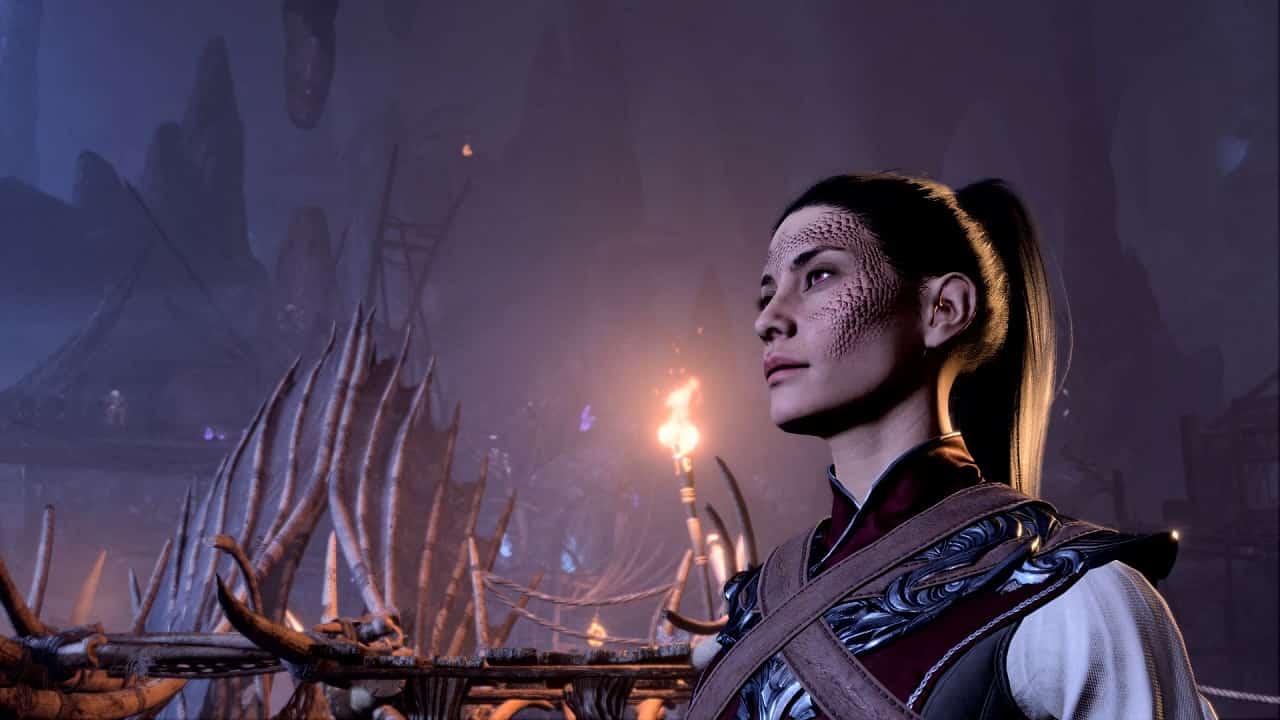
Sorcerer
Recommended Races: Half-Elf, Human, Asmodeus Tiefling, Mephistopheles Tiefling, Drow
Best Feats: Elemental, Adept, Spell Sniper, War Caster
Sorcerers are natural spellcasters, drawing on inherent magic from a gift or bloodline. With a variety as nuanced as the Wizard and Druid classes, the Sorceror has access to powerful elemental spells. Your subclasses are also pretty fleshed out. The Draconic Ancestry subclass in particular lets you pick from a list of resistances and elemental attacks. Just remember not to take a sword to the gut.
Here’s a table with everything you need to know about the Sorcerer in Baldur’s Gate 3:
| Class feature | Value or Skill |
| Maximum HP gained per level | (6 at level 1) + 3 per level + Constitution modifier +1 per level if Draconic Ancestry subclass |
| Ability check proficiencies | Arcana, Religion, Insight, Perception, and Persuasion |
| Saving Throw proficiencies | Constitution and Charisma |
| Armour proficiencies | Light and Medium Armour, Shield |
| Weapon proficiencies | Dagger, Quarterstaff, and Light Crossbow |
| Four cantrips of your choice | Blade Ward, Acid Splash, Mage Hand, Poison Spray, True Strike, Friends, Dancing Lights, Fire Bolt, Light, Ray of Frost, Shocking Grasp, Minor Illusion, and Chill Touch. |
| Two level one spells of your choice | Chromatic Orb, Fog Cloud, Charm Person, Sleep, Burning Hands, Magic Missile, Mage Armour, Thunderwave, Witch Bolt, Colour Spray, Disguise Self, False Life, Ray of Sickness, Expeditious Retreat, Feather Fall, and Jump. |
Here are the differences between Baldur’s Gate 3 Sorcerer subclasses:
- Wild Magic – gains Tide of Chaos (activate to gain Advantage on next attack roll, Ability Check, or Saving Throw. Increases chance of Wild Magic surge) and Wild Magic.
- Draconic Ancestry – gain Draconic Resilience (max HP increases by one for each Sorcerer level) and Draconic Resilience (when you aren’t wearing armour, your base Armour Class is 13). Also, gain an elemental skill and resistance at level 6.
- Storm Sorcery – gain Tempestuous Magic (whirling gusts of elemental air briefly surround you and let you fly up to 10 feet) and Heart of the Storm (bonus lightning/thunder damage on lightning/thunder attacks).
Here are the skills that the Draconic Ancestry Sorcerer has access to at level 6:
- Red (Fire) – Burning Hands level 1 spell
- Black (Acid) – Grease level 1 spell
- Blue (Lightning) – Witch Bolt level 1 spell
- White (Cold) – Armour of Agathys level 1 spell
- Green (Poison) – Ray of Sickness level 1 spell
- Gold (Fire) – Disguise Self level 1 spell
- Silver (Cold) – Feather Fall level 1 spell
- Bronze (Lightning) – Fog Cloud level 1 spell
- Copper (Acid) – Tasha’s Hideous Laughter level 1 spell
- Brass (Fire) – Sleep level 1 spell
Best Sorceror subclass in Baldur’s Gate 3
We recommend the Draconic Ancestry Sorceror. Their bonus health is great for such a frail class. You also benefit from an elemental skill and resistance once you hit level 6 in the game.
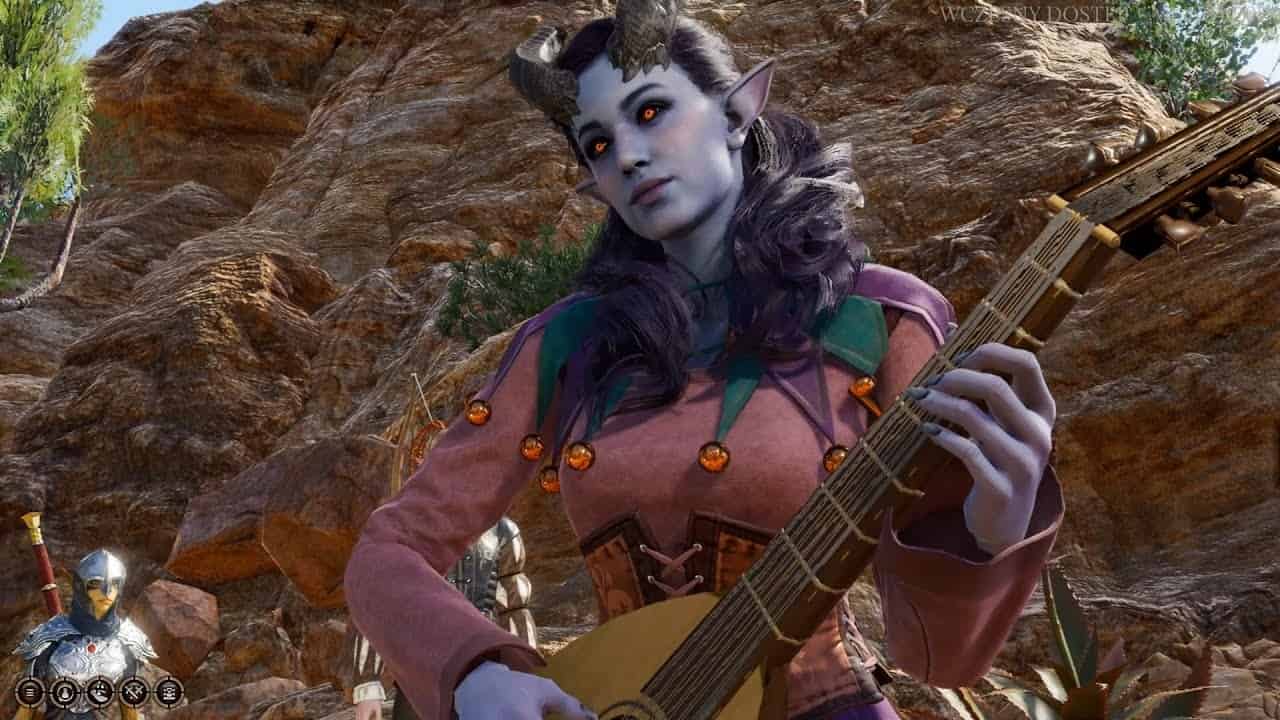
Bard
Recommended Races: Half-Elf, Human, Zariel Tiefling, Drow
Best Feats: Defensive Duelist, Magic Initiate: Warlock, Ability Improvement (Charisma)
Bards are a versatile class who inspire their party with words or music. Considered a support class, this class has spells that primarily empower allies or weaken enemies. Their Bardic Inspiration class action gives ally characters an additional die to improve their odds. Pick the right subclass and you could even pass at melee combat. I picked this class because it can handle anything thrown at it.
With high Charisma, a Bard can usually talk their way out of conflict. But if it comes to trading blows or blade wounds, they can pick the College of Swords subclass for a unique fighting style and combat options. Shooting an enemy with enough force to push them off a ledge will never get boring.
Here’s a list of the Baldur’s Gate 3 Bard starting instruments:
- Hand Drum
- Flute
- Lute
- Lyre
- Violin
And here’s a table with everything you need to know about the Bard in Baldur’s Gate 3:
| Class feature | Value or Skill |
| Maximum HP gained per level | (8 at level 1) + 4 per level + Constitution modifier |
| Ability check proficiencies | Religion, Insight, Perception, Deception, Performance, and Persuasion |
| Saving Throw proficiencies | Dexterity and Charisma |
| Armour proficiencies | Light Armour |
| Weapon proficiencies | Simple weapon, Hand Crossbow, Longsword, Rapier, Shortsword and Musical Instrument |
| Class Action – Bardic Inspiration | Inspire an ally with your performance as a Bonus Action. They can add a +1D6 bonus to their next attack roll, Ability Check, or Saving Throw. The effect lasts 18 minutes and the action recharges after a long rest. |
| Two cantrips of your choice | Vicious Mockery, Blade Ward, Mage Hand, True Strike, Friends, Dancing Lights, Light, and Minor Illusion |
| Four level one spells of your choice | Speak with Animals, Animal Friendship, Bane, Charm Person, Dissonant Whispers, Heroism, Tasha’s Hideous Laughter, Sleep, Cure Wounds, Faerie Fire, Healing Word, Thunderwave, Disguise Self, Feather Fall, and Longstrider |
Here are the differences between Baldur’s Gate 3 Bard subclasses:
- College of Lore – gain proficiency in Arcana, Intimidation, and Sleight of Hand. Gain Cutting Words (1d6 penalty to enemy Attack Rolls and Ability Checks).
- College of Valour – gain proficiency in Medium Armour, Shield, and Martial Weapons.
- College of Swords – gain proficiency in medium Armour and the scimitar. Gain a Fighting Style (Dueling or Two-Weapon Fighting), a Blade Flourish (boost walking speed after an attack), and an Extra Attack.
Best Bard subclass in Baldur’s Gate 3
We recommend the College of Swords Bard as you get to hold your own in direct combat. Raising your Armour Class or pushing enemies off cliffs are abilities that greatly enhance the Bard’s versatility in combat.
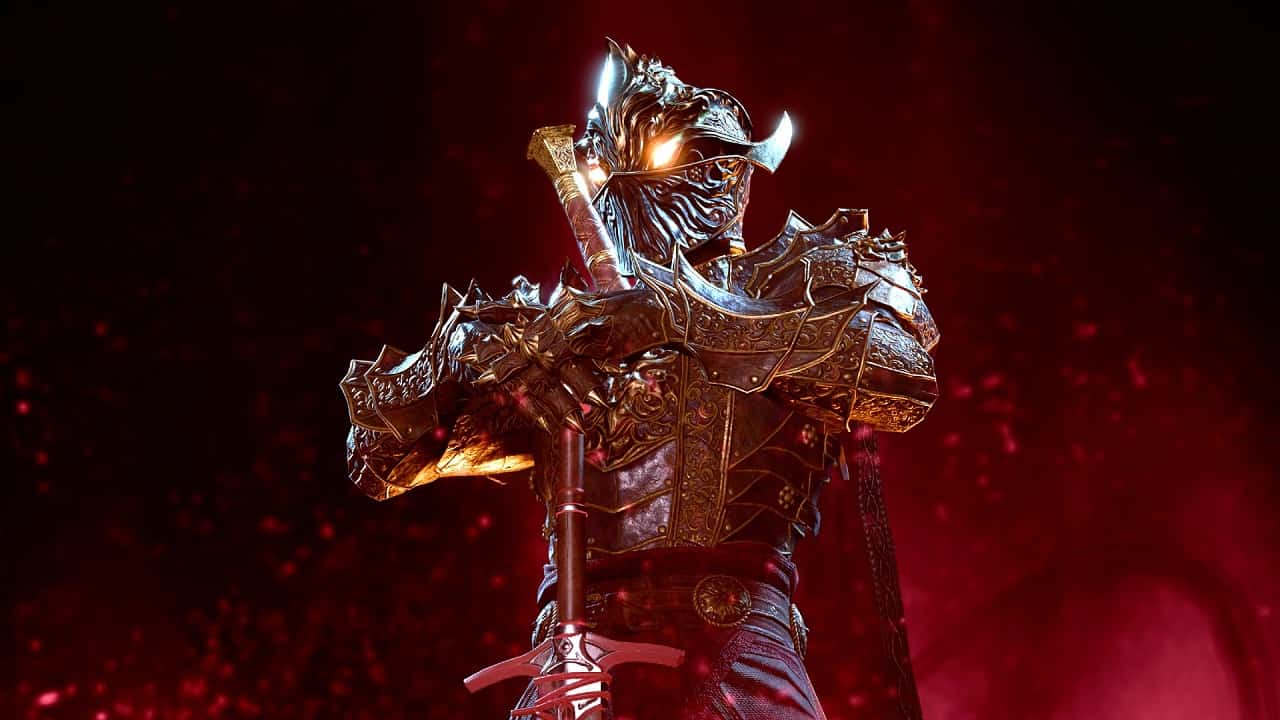
Paladin
Recommended Races: Shield Dwarf, Githyanki, Half-Orc, Human, Zariel Tiefling
Best Feats: Charger, Heavy Armour Master, Shield Master
A hybrid between cleric and fighter, Paladins are marked by the ability to unleash formidable and devastating blows on enemies while providing support to their team. While their kit is expansive, remember that you need to stick to your Oath. Failure to do so can turn you into an Oathbreaker Paladin, a subclass with its own features and skills. This is even tougher if you pick the Dark Urge Origin character.
Several in-game choices can trigger this, ranging from torturing Liam at the Shattered Sanctum to killing an Owlbear and her cub. Each Oath has unique ways to break it. While you can reclaim your Oath, it will cost you a good amount of gold. If you think the cost in blood is worth it, Minthara is a solid Paladin companion.
Here’s a table with everything you need to know about the Paladin in Baldur’s Gate 3:
| Class feature | Value or Skill |
| Maximum HP gained per level | (10 at level 1) + 5 per level + Constitution modifier |
| Ability check proficiencies | Athletics, Religion, Insight, Perception and Intimidation |
| Saving Throw proficiencies | Wisdom and Charisma |
| Armour proficiencies | Light, Medium, and Heavy Armour, Shield |
| Weapon proficiencies | Simple weapons and Martial Weapons |
| Class Action – Lay on Hands | Use your blessed touch to heal a creature or cure it of all diseases and poisons. |
| Class Action – Divine Sense | Gain an Advantage on Attack Rolls against celestials, fiends, and undead. |
Here are the differences between Baldur’s Gate 3 Paladin subclasses:
- Oath of Devotion – gain Holy Rebuke ( grant an ally a vengeful aura that deals 1d4 Radiant Damage to anyone who hits them directly).
- Oath of the Ancients – gain Healing Radiance (let nature heal all nearby allies).
- Oath of Vengeance – gain Channel Divinity (use Abjure Enemy to frighten or Vow of Enmity to gain attack roll advantage) and Relentless Avenger (when hit a creature with an opportunity attack, move up to half your speed immediately).
- Oathbreaker – gain Spiteful Suffering (Necrotic damage), Control Undead, and Dreadful Aspect (Frighten nearby enemies).
Best Paladin subclass in Baldur’s Gate 3
We recommend the Oath of the Ancients Paladin as Healing Radiance heals nearby allies. This helps your party with respect to surviving waves of foes.
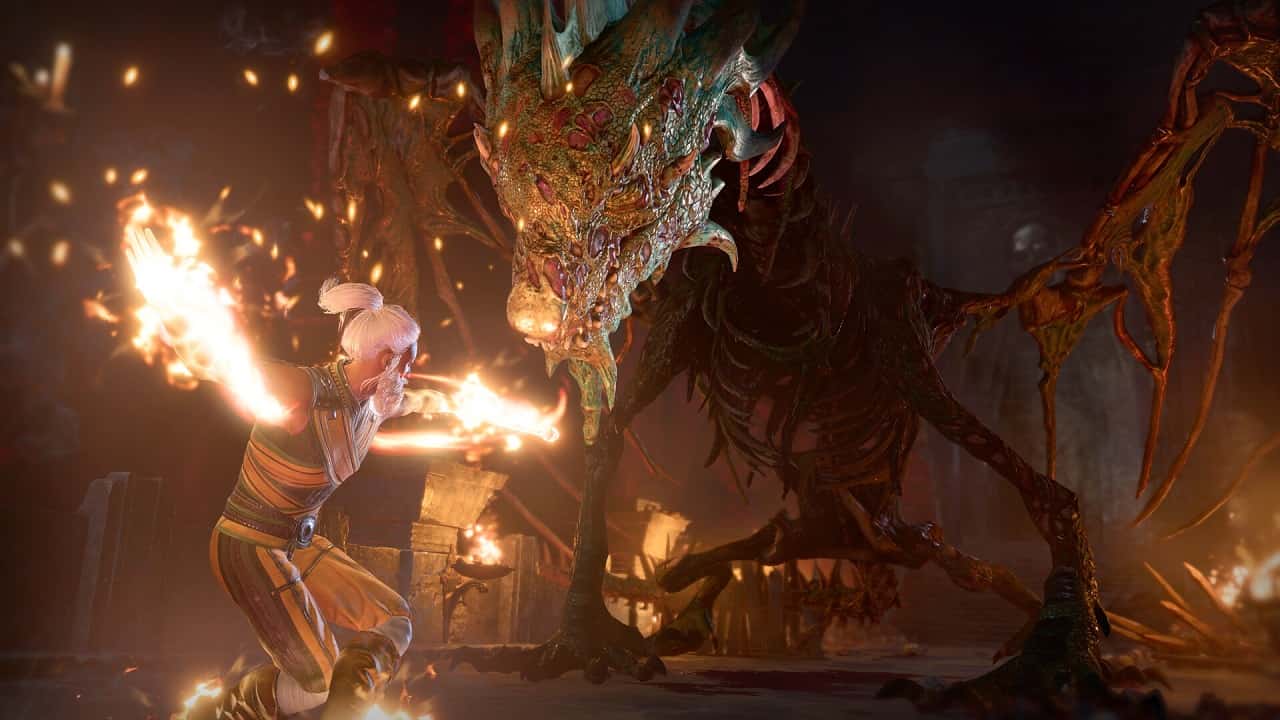
Monk
Recommended Races: Human, Drow, Wood Elf, High Elf
Best Feats: Magic Initiate: Cleric, Martial Adept, Tavern Brawler
Monks are masters of manipulating the field of combat – pushing, pulling, and stunning enemies across the battleground using forceful Ki-powered punches. While they aren’t the tankiest class, unarmored defence lets them sustain injuries as they use Ki points to unleash powerful attacks. The Way of the Four Elements is a personal favourite thanks to its rich assortment of elemental attacks.
Here’s a table with everything you need to know about the Monk in Baldur’s Gate 3:
| Class feature | Value or Skill |
| Maximum HP gained per level | (8 at level 1) + 4 per level + Constitution modifier |
| Ability check proficiencies | Acrobatics, Athletics, History, Insight, Religion, Stealth |
| Saving Throw proficiencies | Strength and Dexterity |
| Armour proficiencies | None |
| Weapon proficiencies | Simple weapons and shortswords |
| Class Feature – Unarmoured Defense | While not wearing armour, you add your Constitution modifier to your armour class |
| Class Feature – Ki | Ki is the magic that flows through all living beings. You can use it to exceed your body‘s physical capabilities. Think of them as charges for Monk-specific attacks like Flurry of Blows (punch twice in quick succession.) |
| Class Feature – Martial Arts | Pick from Dextrous attacks (Attacks with Monk Weapons and unarmed attacks scale with your Dexterity instead), Deft Strikes (higher their minimum damage with Monk Weapons or unarmed), and Bonus Unarmed Strike (extra unarmed or Monk Weapon attack) |
Here are the differences between Baldur’s Gate 3 Monk subclasses:
- Way of the Open Hand – gain Open Hand Flurry Strike Dex/Str (2 Offhand Dexterity/Strength Attacks when you spend a Ki Point).
- Way of Shadow – gain Shadow Arts (spend 2 ki points to cast darkness, dark vision, pass without trace, or silence), Shadow Step (teleport up to 60 feet from dim light to an unoccupied space also in dim light), and Cloak of Shadows (use your action to become invisible).
- Way of the Four Elements – gain a variety of elemental attacks.
Here’s a list of class passives the Way of the Four Elements Monk can use in Baldur’s Gate 3:
- Fangs of the Fire Snake – spend 1 Ki Point to make 3 unarmed attacks (fire damage) against creatures within 10 ft of you.
- Fist of Four Thunders – channel Ki to cast Thunderwave.
- Fist of Unbroken Air – channel Ki to create a blast of compressed air.
- Rush of the Gale Spirits – channel Ki to cast Gust of Wind.
- Sweeping Cinder Strike – channel Ki to cast Burning Hands.
- Water Whip – strike with a whip of water that either pulls a creature to you or knocks it down.
Best Monk subclass in Baldur’s Gate 3
The Way of Shadow Monk has many spells that can rewrite the rules of the battlefield like darkness and silence. They’re great at positioning too. Way of the Four Elements is a more offensive pick.
Best class and subclass in Baldur’s Gate 3
That covers all of Baldur’s Gate 3 classes and subclasses. With so many options to pick from, it can be difficult to pick one for your first playthrough. We recommend the Life Domain Cleric, Draconic Ancestry Sorcerer, and Oath of the Ancients Paladin as the best subclasses in Baldur’s Gate 3. Here’s why these would count as S-tier in a Baldur’s Gate 3 class tier list:
- Life Domain Cleric – Clerics are solid support units thanks to their healing prowess. Add their Guidance cantrip (extra D4 to anything except combat) and the Life Domain’s boosted healing and you’ve got a solid ally to command. Heavy armour proficiency is also a sweet plus.
- Draconic Ancestry Sorcerer – While sorcerers are known as massive damage glass cannons, picking the draconic bloodline makes them durable while granting them additional elemental resistance and attacks. Your high Charisma also makes you great at conversations. White and Red are solid picks.
- Oath of the Ancients Paladin – Paladins are excellent frontline fighters that have access to heals and support spells too. The best of both worlds, their Charisma stat also makes them sweet talkers. The Misty Step teleport spell from Oath of the Ancient lets them position themselves better during combat.
- Battle Master Fighter – With the potential to unleash up to seven attacks per turn in the late game, this subclass is simple and effective. Add solid armour options and weapons to pick from and you’ve got a character who can sweep any battlefield.
- Gloom Stalker Ranger – Just like the previous pick, solid single-target damage and multiple attacks per turn make this subclass a force to reckon with. You can opt for a stealthy approach or focus on offensive abilities to clear mobs of foes.
Check out other Baldur’s Gate 3 races like the Elves, Drow, Githyanki, and Half-elf to pair them with your class. The massive RPG has been brewing for years and has launched to an incredible reception from fans and critics this year. For players just entering the world of the Forgotten Realms, here are the best graphics settings for Baldur’s Gate 3. Here’s a Baldur’s Gate 3 character creation guide too to help with the choices BG3 presents right at the start. The game is live on PC, Xbox Series X|S, and PlayStation 5.
Baldur’s Gate 3 classes and subclasses FAQ
What is the best subclass for the Ranger in Baldur’s Gate 3?
The Hunter is the best subclass for the Ranger in Baldur’s Gate 3.
What is the best Cleric subclass in Baldur’s Gate 3?
The Life Domain is the best Cleric subclass in Baldur’s Gate 3.

